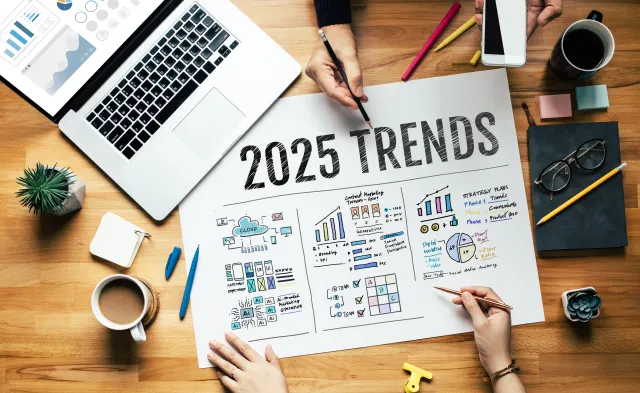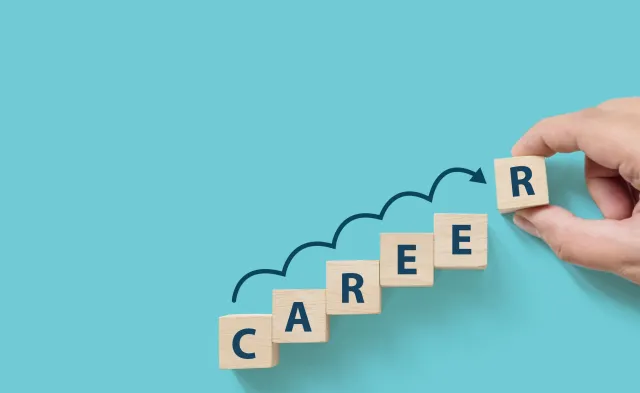Latest
Code-Switching
Oct 1, 2021

Human beings are social people. Deep down, we all want to feel like we belong, whether that is within our family, social group or in society in general. Fitting in or changing is not always a bad thing. For example, joining a group that inspires you to be more confident can promote a positive lifestyle change.
However, is changing for a group always a good thing? If we must change parts of ourselves to conform, is that being authentic?
In her latest T.R.U.E. Talk with Terri, “Code Switching,” Herzing Associate Vice President of Diversity, Equity and Inclusion Terri Howard leads a discussion on code-switching and its significance in the diversity conversation. She is joined by Sherrece Jackson, a Herzing University alum who works in human resources. Sherrece speaks about her personal experiences and how individuals can overcome some of the common challenges brought about by code-switching.
What is code-switching?
The Harvard Business Review defines code-switching as adjusting your style of speech, appearance, behavior, or expression for the comfort of others in exchange for fair treatment. This fair treatment can come in many different forms, ranging from quality service to employment opportunities. Code-switching often occurs when negative stereotypes of people run counter to what is considered appropriate behaviors for a specific environment.
For example, research suggests that black students, even as young as elementary school, selectively code-switch between standard English in the classroom and African American vernacular English (AAE). This is to not only fit in but also to be perceived as more intelligent.
Terri commented on the perceived need for code-switching within minority groups: “With each intended audience, we also see examples of guidelines encouraging people of color to code-switch to survive police interactions such as acting polite and respectful when stopped and avoid running even if you're afraid.”
Why do individuals code-switch?
According to National Public Radio (NPR), people may code-switch for a variety of reasons:
- It may just happen. Have you ever spent so much time with people that you start to pick up some of their habits? If you are surrounded by people who act in a specific way, you may inadvertently pick up on these behaviors. Now take this on a huge scale. If everyone in society acts a specific way, you may begin to conform to these actions without knowing you are. This is perhaps the tamest form of code-switching because it is more or less harmless.
- You want to fit in. Very often, people code-switch to act or talk more like those around them or to assimilate into the dominant culture. For example, it is considered rude to talk loudly on a train in Japan. Most travelers will sit or stand in silence while onboard the train. If you decide to travel to Japan you may decide to stay quiet to fit in.
Unfortunately for some people, code-switching often feels like a requirement to be recognized for one's efforts and talents or to be promoted. Some people have to change parts of themselves or their appearance be to achieve some level of power, respect or recognition.
- You want to get something. Who hasn’t used a customer service voice before? By knowingly raising our vocal tone, we can sound more friendly and hopefully be more persuasive to our “customers.” However, sometimes the thing that we want is safety. Let's face it, there are certain circumstances when code-switching can be lifesaving. Shifting posture, dress, changing accent or mimicking traditional gender characteristics can reduce the threat of attack.
The impact of code-switching can be quite exhausting. It can feel like we’re putting on a costume or turning a switch on or off.
Does code-switching allow you still to be your authentic self?
An Atlanta-based psychologist and coach Dr. Dione Mahaffey believes that code-switching does not employ an inauthentic version of self, “rather it calls upon certain aspects of our identity in place of others, depending on the space or circumstance.” In other words, code-switching is still an authentic part of a person because it is a part of their experience.
Sherrece Jackson felt otherwise. “You are being someone else and you have to keep that on so it's like an act. I worked for a major company and I had to switch daily. Normally when we talk about code-switching, everybody is thinking about voice, but it is more than that. It's me in general.”
Since Sherrece works in human resources, she will code-switch, but often it is best to just be yourself when connecting with other people. People may seem uptight, so the tone of the conversation will change. “I'm like ‘OK, you know what, let's do this a bit differently. Let's just talk down to earth. Let's just get to know one another.’ Then they're more open to letting me know exactly who they are. They're more at ease and willing to talk.”
Code-switching seems more like a social standard to seem “professional,” but that seems like an arbitrary construct. It's professional based on the perspective of some given norms that exist.
How can we begin to minimize or even eliminate the need for code-switching?
To eliminate the need for code-switching, people must be accepted as they are. Everyone comes with differences, from ideas, ways of communicating, styles, personality and more.
Terri makes an important reflection: “Should we be looking at these issues even in school? As you think back to your experience, are there things maybe that teachers, faculty or staff can promote to help people bring their authentic selves even in that environment?”
Growing up or experiencing an educational atmosphere that not only promotes your growth but allows you to focus on being your best self is critical for self-growth. Our educational experiences should be focused on learning and less on conforming to the institutional system. The more open we are to acknowledge and embrace differences, the more likely we are to bring our authentic selves into our interactions.
As a manager what are some best practices for creating an inclusive workplace?
There are many things that employers can do to promote inclusivity in the workplace. Inclusiveness is a daily practice. Leaders can be curious and learn about cultural differences and intentionally invite employees into their networks and actively listen to their input.
But with any important change, you need to start with yourself. Is there something that you may be hiding or downplaying in the workplace? By bringing more of yourself to the table, you may encourage others to do the same.
Check your biases. If you catch yourself thinking that an employee or co-worker is not like other people, engage in self-inquiry. Where do those thoughts come from? Engaging in this line of questioning promotes being curious about your biases rather than asking people, such as people of a different race or culture, to explain their differences.
Understanding that diversity and inclusion are two separate things and addressing under-representation at all levels of the organization are major steps that the workplace can take to minimize the need for code-switching. It can also give everyone a chance to bring their authentic selves to work every day.
Learn More About Our Career Programs
Bureau of Labor Statistics (BLS), U.S. Department of Labor, Occupational Employment and Wage Statistics 2023 / Occupational Outlook Handbook 2022. BLS estimates do not represent entry-level wages and/or salaries. Multiple factors, including prior experience, age, geography market in which you want to work and degree field, will affect career outcomes and earnings. Herzing neither represents that its graduates will earn the average salaries calculated by BLS for a particular job nor guarantees that graduation from its program will result in a job, promotion, salary increase or other career growth.
Latest
Recent Blog Posts
Subscribe to our Newsletter
Get the latest news you need to know, from study hacks to interview tips to career advancement. Have it delivered right to your inbox biweekly.








